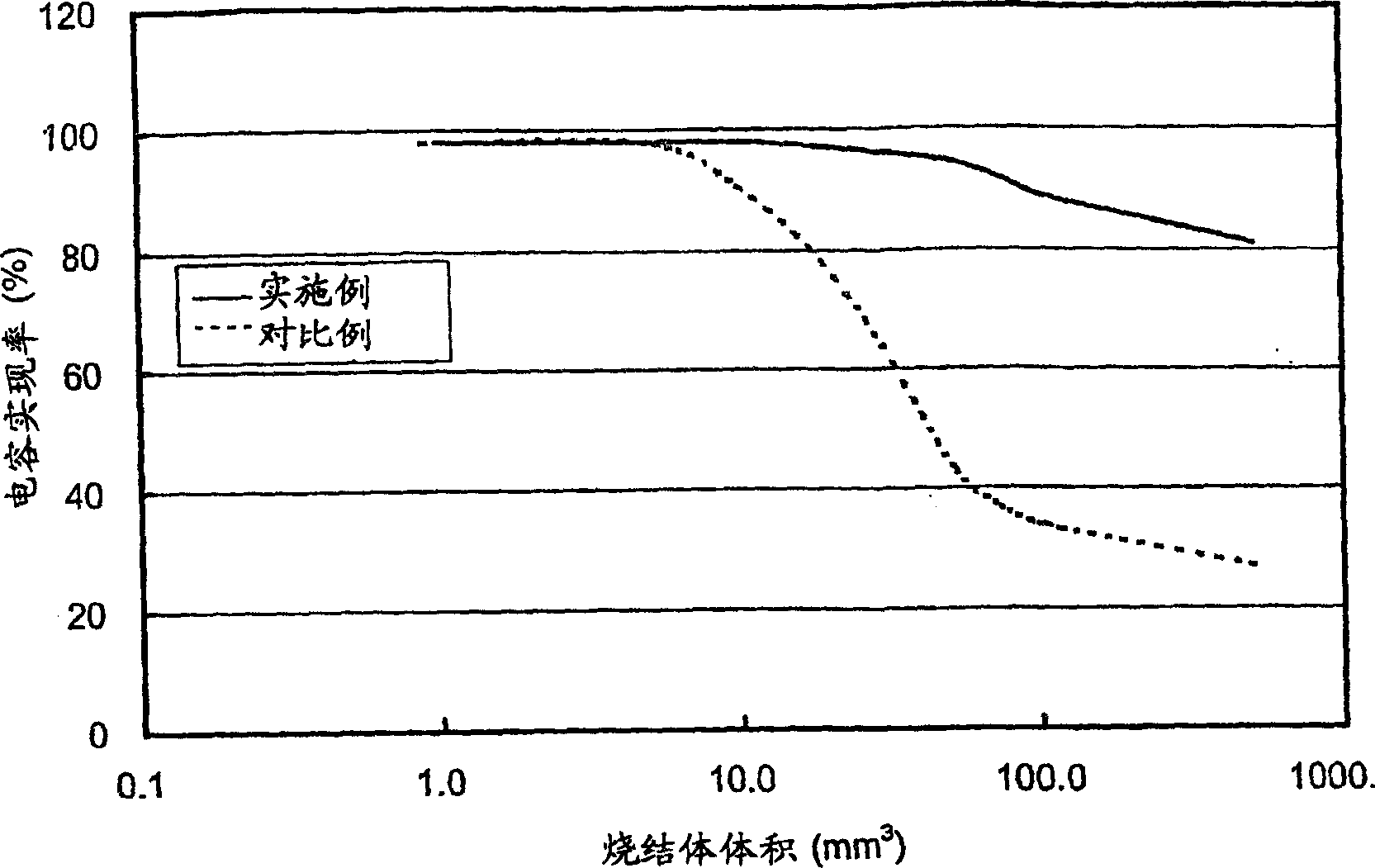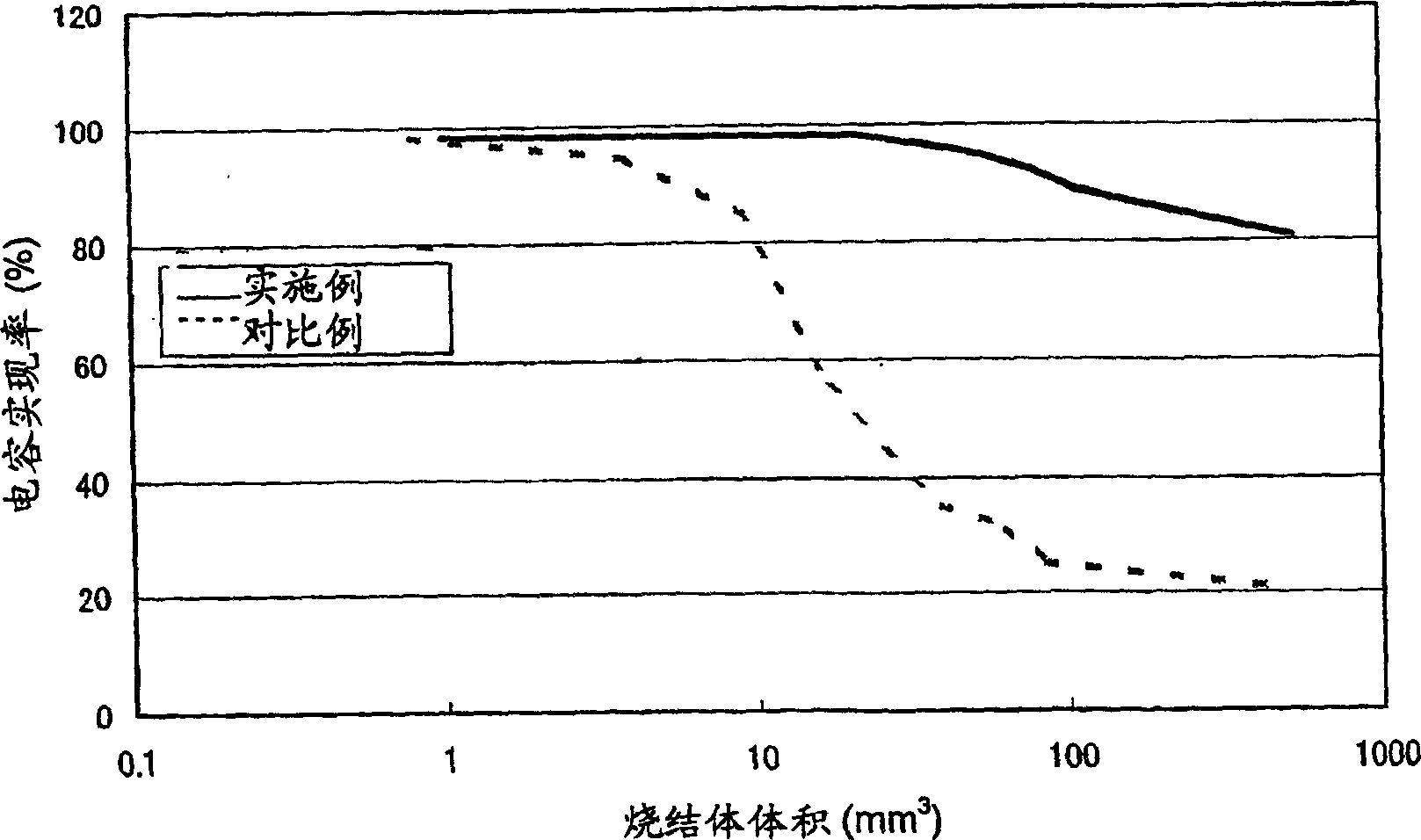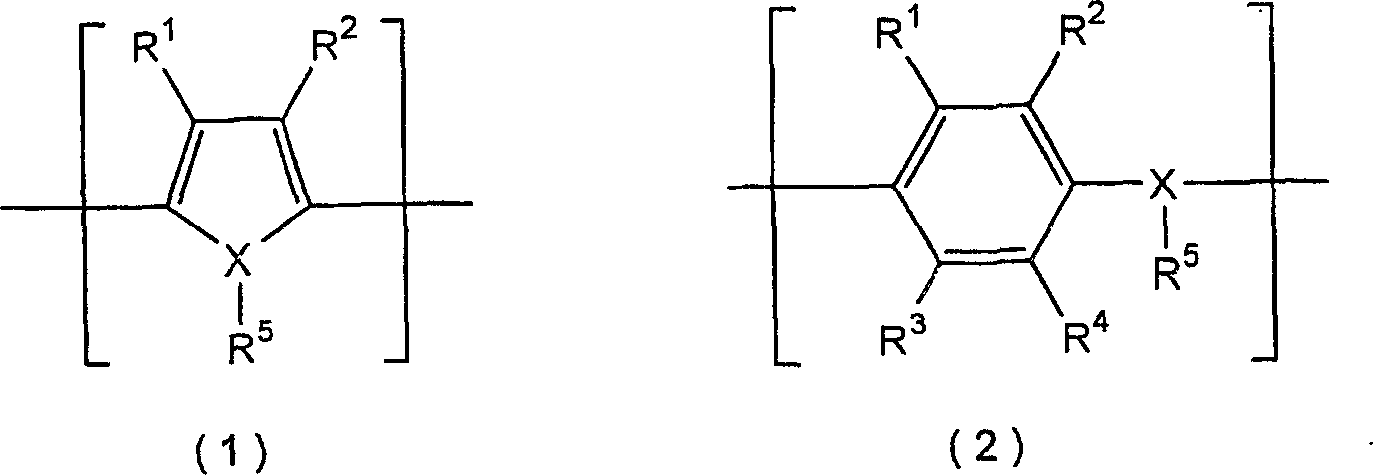Valve acting metal sintered body, production method therefor and solid electrolytic capacitor
A technology of solid electrolysis and manufacturing methods, which is applied in the direction of solid electrolytic capacitors, electrolytic capacitors, capacitors, etc., and can solve the problems of cathode material soaking and inability to manufacture capacitors, etc.
- Summary
- Abstract
- Description
- Claims
- Application Information
AI Technical Summary
Problems solved by technology
Method used
Image
Examples
Embodiment approach
[0194] The present invention will be described in more detail below with reference to Examples and Comparative Examples, however, the present invention is not limited thereto. In each example, the tap density, angle of repose, particle size, pore diameter and capacitance, leakage current value, capacitance realization rate, and moisture resistance of the capacitor were measured by the following methods.
[0195] (1) Porosity of sintered body
[0196] The bulk density of the sintered body is determined by the external size and mass of the sintered body, the real density of the sintered body is measured by a pycnometer, and the porosity of the sintered body is calculated according to the following formula:
[0197] Porosity (%)={1-(bulk density / true density)}×100
[0198] (2) Particle size measurement
[0199] The particle size distribution was measured according to the laser diffraction scattering method using a particle size distribution analyzer (HRA 9320-X100, manufactured...
Embodiment 1
[0230] Dissolve 500 g of camphor in 10 ml of toluene at room temperature. In the resulting solution, 8.4 kg of niobium hydride powder having an average particle size of 0.5 microns obtained by grinding niobium hydride, 800 g of barium oxide powder having an average particle size of 0.7 microns, and 800 g of barium oxide having an average particle size of 2 microns Powder dispersed. The resulting dispersion was mixed in a Dynomill using zirconia beads for 1 hour. The resulting slurry was added to a Nauter mixer and granulated while at 1 x 10 2 Dry under reduced pressure at Pa and 80° C. to obtain a granular product containing a mixture of niobium hydride, barium oxide and camphor and having an average particle size of 120 microns. in 1×10 2 The mixed granulated product was dehydrogenated at 480°C under a reduced pressure of Pa or lower, whereby niobium hydride was converted into niobium, and camphor was simultaneously removed to obtain 10 kg of a mixture containing niobium a...
Embodiment 2 to 4
[0238] A niobium sintered body embedded with a niobium lead was obtained in the same manner as in Example 1, except that before forming (Example 2), after forming but before sintering (Example 3), or after sintering but after removing the barium oxide Previously (Example 4) nitriding treatment was performed at 300° C. for 2 hours in a nitrogen atmosphere. 100 elements of various sintered bodies were prepared and electrochemically generated at a voltage of 20 V for 600 minutes using a 0.1% phosphoric acid aqueous solution to form an oxide dielectric film on the surface. Chip capacitors were manufactured from these electrochemically produced niobium anode sintered bodies using capacitor manufacturing method 1, 2, or 3. The physical properties of each sintered body and the capacitance realization rate and electrical performance of each capacitor are listed in Tables 1 to 3.
PUM
| Property | Measurement | Unit |
|---|---|---|
| viscosity | aaaaa | aaaaa |
| capacitance | aaaaa | aaaaa |
| density | aaaaa | aaaaa |
Abstract
Description
Claims
Application Information
 Login to View More
Login to View More - R&D
- Intellectual Property
- Life Sciences
- Materials
- Tech Scout
- Unparalleled Data Quality
- Higher Quality Content
- 60% Fewer Hallucinations
Browse by: Latest US Patents, China's latest patents, Technical Efficacy Thesaurus, Application Domain, Technology Topic, Popular Technical Reports.
© 2025 PatSnap. All rights reserved.Legal|Privacy policy|Modern Slavery Act Transparency Statement|Sitemap|About US| Contact US: help@patsnap.com



